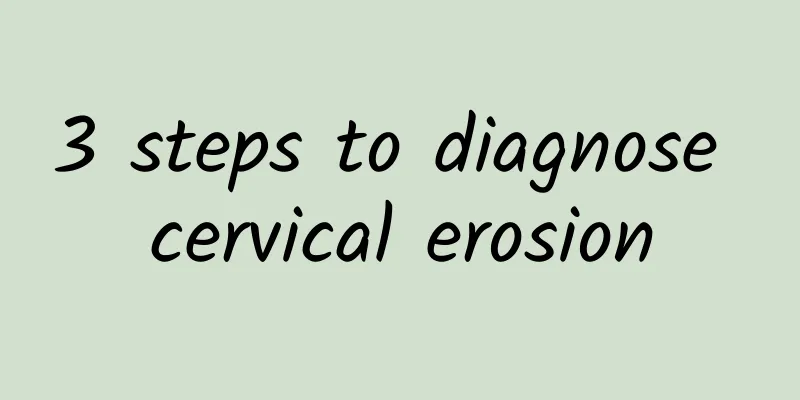The harm of congenital absence of vagina can affect future generations

|
Congenital absence of uterus and vagina, commonly known as "stone woman", also called "real woman" in ancient times, refers to women who never have menstruation and have no obvious symptoms. It is the most common congenital malformation of the female urogenital system, caused by the failure of the middle and tail segments of the mesonephric ducts on both sides to develop and merge. The incidence rate is 1/4000~80000, and the cause is still unclear. Generally, the ovaries develop normally and the secondary sexual characteristics are not affected. Most of them are discovered after puberty when menstruation does not occur. People who are born without vagina are physiologically female. This type of patients mainly have development disorders during the fetal period, which leads to abnormal vaginal formation. This disease is often accompanied by the absence or incomplete development of the uterus, while the ovaries are still normally developed. Therefore, the patient only has no vagina, and all other aspects are female developmental characteristics. After the operation, they can get married and have a satisfying sexual life, because they cannot have children without a uterus. Patients with congenital absence of vagina often do not have a uterus, so they do not have menstruation. Even if a few people have a uterus, menstrual blood cannot be discharged because they do not have a vagina. The treatment for congenital absence of vagina is to rebuild an artificial vagina. There are many methods for artificial vaginal formation, including non-surgical treatment, which uses the method of top pressure to gradually push the closed vestibule mucosa in the normal vaginal position toward the head side along the vaginal axis to form an artificial cavity. Most patients with congenital absence of vagina have uterine dysplasia, but a few patients with congenital absence of vagina have both uterus and ovaries. In this case, artificial vaginal surgery can be performed. If another vagina is built, menstruation can occur and fertility may be possible, but the operation is difficult and must be performed in a regular hospital to ensure the effect of the operation. There are many reasons why girls over 18 years old have not yet had menstruation, including physiological, psychological factors and certain diseases. Congenital absence of vagina is commonly known as "stone woman", which actually refers to women who have no menstruation due to some congenital developmental defects of the genitals. The clinical manifestations of stone women include hymen occlusion, congenital absence of vagina or vaginal occlusion, complete vaginal septum, etc. This type of congenital defect does not attract people's attention when they are born. Some people pay attention to it when they see that menstruation is delayed during puberty, and some people are not discovered until they cannot have sex on the wedding night. Normal women have a vaginal opening below the urethral opening and above the anus, and there is a layer of circular thin film tissue covering the vaginal opening, which is the hymen. The hymen of a normal person has a small hole, from which menstrual blood flows out. If there is no hole in the hymen, it is called hymen occlusion. The uterus and vagina of such patients can develop normally, and menstrual blood accumulates in the vagina and cannot be discharged, forming blood accumulation. The blood accumulation can extend to the uterine cavity, fallopian tubes and flow back to the abdominal cavity. Due to the accumulation of blood, the patient has abdominal pain once a month, and the pain gradually worsens. The method of treating hymen occlusion is relatively simple, just cut the hymen and release the blood. "Stone women" have no menstruation at all, and cannot have sexual intercourse after marriage. Then you have to check whether it is "congenital absence of vagina". |
<<: What harm does congenital absence of vagina bring to the fetus?
>>: What are the dangers of congenital absence of uterus?
Recommend
Let’s learn about the diagnosis of chronic cervicitis
"What are the diagnostic methods for chronic...
Can I get ovarian cysts if I'm not married?
Will I get ovarian cysts if I am not married? Gen...
Symptoms of uterine fibroids that may be induced in life
Among female gynecological diseases, uterine fibr...
What symptoms indicate irregular menstruation in women
What are the symptoms of irregular menstruation? ...
What are the examination methods for congenital absence of vagina?
Women are all going through the transformation of...
Is vaginitis a sexually transmitted disease? Can vaginitis be transmitted through sexual intercourse?
Common vaginitis is not a sexually transmitted di...
What causes ovarian cysts?
Ovarian cysts are actually a type of gynecologica...
What are the causes of threatened miscarriage?
The causes of threatened miscarriage include gene...
Can ovarian cysts affect their life expectancy?
Will ovarian cysts affect life expectancy? Accord...
Can eating brown rice help you lose weight and stay healthy? If you have this physical problem, it is better to eat white rice
With the rise of health awareness in modern times...
Six key points to pay attention to in adnexitis
Adnexitis brings a lot of harm to our lives. As a...
Treatment methods for multiple uterine fibroids How are multiple uterine fibroids treated by traditional Chinese and Western medicine?
Nowadays, there are indeed many ways to treat ute...
Will eating pasta make you fat? Choosing the right "rejuvenating lunch" combination can still help you eat healthily
There is a rejuvenating dish that is highly recom...
Fat man loses 57kg and undergoes sleeve gastrectomy successfully
It is no longer a dream for a fat man to become a...
Common complications of ovarian cysts
Ovarian cysts are a serious disease that endanger...









